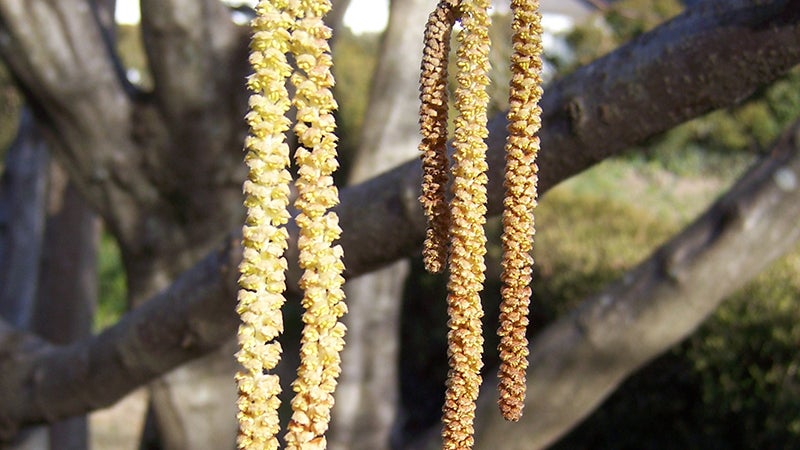Wildlife enjoys American hazelnut
Published 4:15 pm Friday, February 8, 2019

- American Hazelnut, which begins its blooming this month, is widespread in Virginia.
|
Getting your Trinity Audio player ready...
|
American Hazelnut
Corylus americana
This multi-stemmed shrub can be recognized in the winter by the 2-3-inches long, yellowish-brown catkins, hanging from the tips of every branch. These are the male flowers, the female flowers appear in small, reddish, inconspicuous catkins. In late summer, the female flowers give way to small, egg-shaped nuts encased within interesting leafy, ragged-edged bracts.
Dark-green leaves are oval-shaped, edged with double teeth. In the fall their color ranges from combinations of orange, rose, purplish red and yellow to a dull yellowish green. Twigs are covered with bristly, reddish hairs topped with sticky glands; they contain toxic materials that may act as a line of defense. The hairs were used by Native Americans and early physicians to treat nephritis.
Hazelnut grows in moist to dry well-drained soils, in full sun or light shade, and can tolerate clay and drought. This tree is cold-hardy, blooming in February through March. It is widespread in Virginia, usually found in dry or moist woods and thickets.
Growing 6-12 feet tall, the plant can form thickets, creating a dense privacy screen and furnishing nesting sites for birds. Also known as American filbert, the hazelnuts are edible and eaten by deer, squirrels, foxes, northern bobwhite, turkey and woodpeckers. They have a higher nutritional value than acorns or beechnuts, but are quite small and this plant is not grown for commercial purposes. A European species, C. avellane, is the source of hazelnuts in the U.S.
HELEN HAMILTON is past president of the John Clayton Chapter, Virginia Native Plant Society. Contact her at helen48@cox.net. For more information about native plants, visit www.vnps.org.

